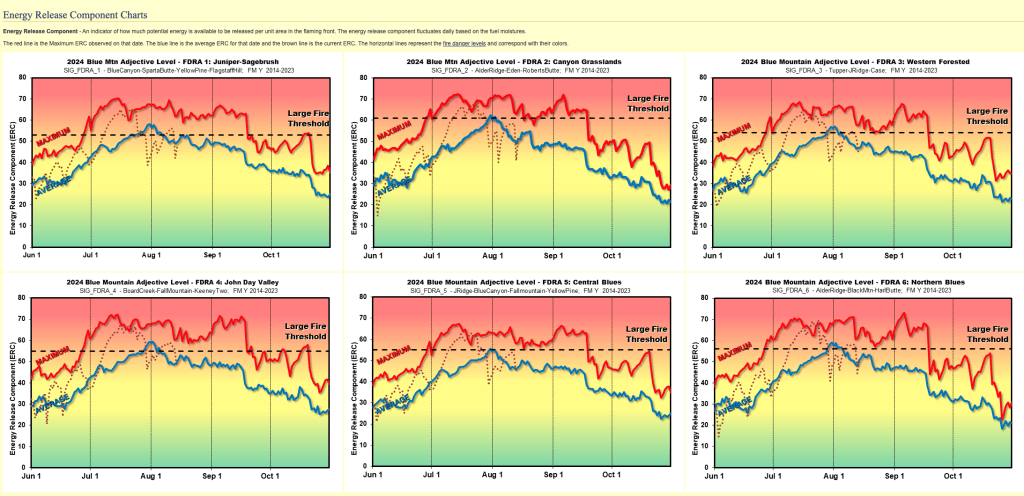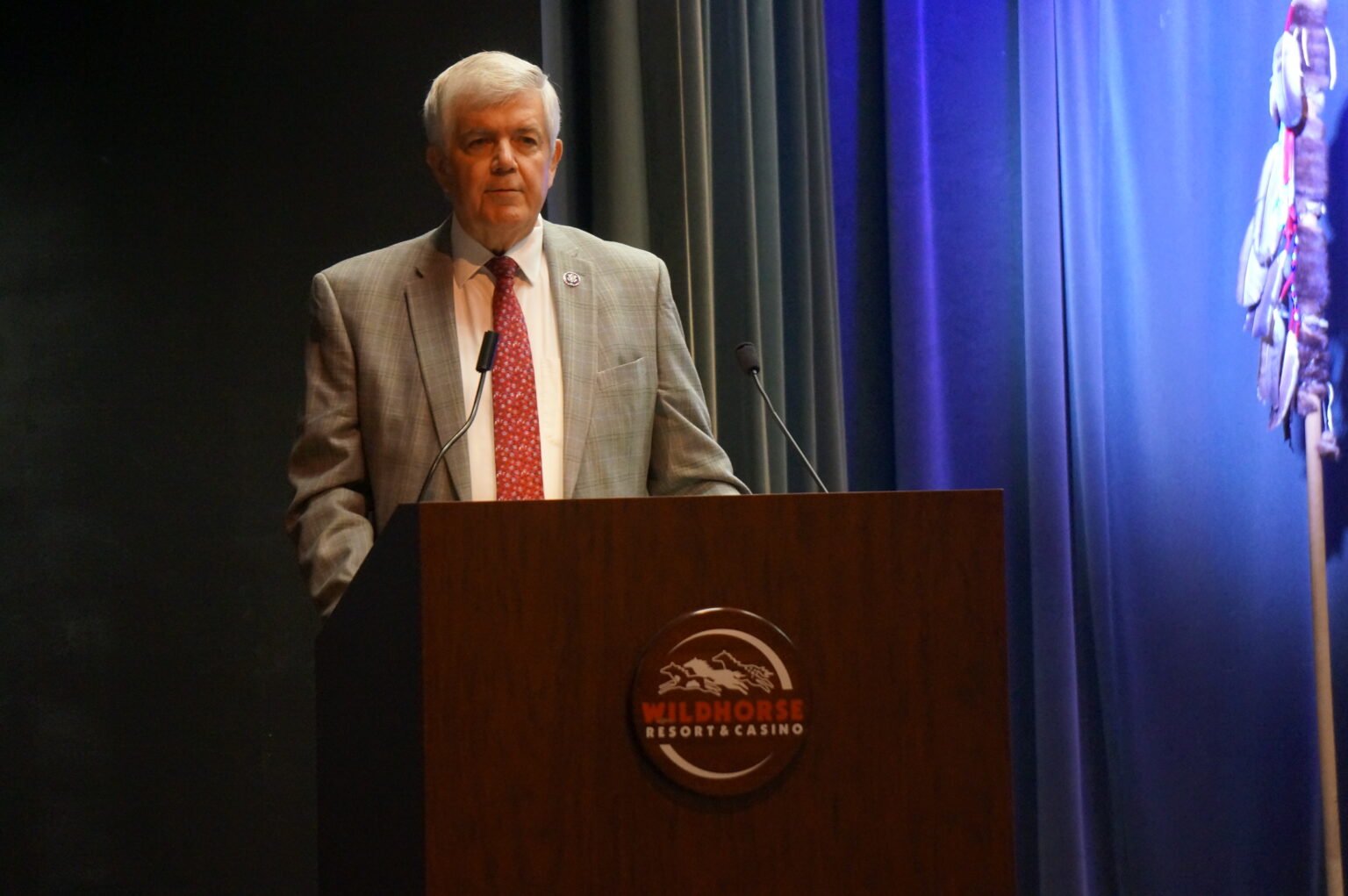More lightning — but also more rain — forecast Wednesday night, Thursday
Published 8:43 am Wednesday, August 14, 2024

- Charts show the Energy Release Component, an estimate of how quickly a wildfire would spread.
Firefighters continue to monitor Northeastern Oregon for holdover fires started by lightning early Tuesday, Aug. 13, and they’re preparing for more new starts as another round of thunderstorms is forecast Wednesday night and Thursday.
Trending
About 120 cloud-to-ground lightning strikes hit the region on Tuesday, according to the National Weather Service.
The approaching storm likely will follow a similar trajectory, according to the agency.
Fortunately for firefighters, the incoming storms, like those on Tuesday, are expected to bring areas of heavy rain along with lightning and gusty winds.
Trending
The amount of moisture in the atmosphere is well above average for mid-August, according to the National Weather Service.
Rain can either prevent lightning strikes from igniting fires, or keep blazes from growing rapidly.
Those fires can smolder for hours or days before spreading.
“Holdovers can show up 10 to 14 days after the strike,” said Joel McCraw, assistant fire management officer for the Wallowa-Whitman National Forest.
Although lightning started several fires on Tuesday, none spread rapidly, and firefighters contained most of the blazes before they had burned more than a couple acres.
The rain, along with cooler temperatures compared with July and the first dozen days of August, and higher nighttime humidity levels, have reduced the risk of large fires, according to indexes.
The Energy Release Component is a key measure that firefighters track. The ERC, which reflects how quickly a fire could spread based on how much energy could be released by burning fuel, fluctuates daily based on moisture levels in various types of fuels, such as grass and down logs.
The ERC is updated daily for each of the six zones in the region, their boundaries based on fuel types, such as grasslands and forest, and terrain. The index is available at bmidc.org/erc.shtml.
The ERC reached record highs in some zones during the peak of the heat wave in July. But the index has dropped to near normal, and in some cases below normal, since Tuesday’s rain.









